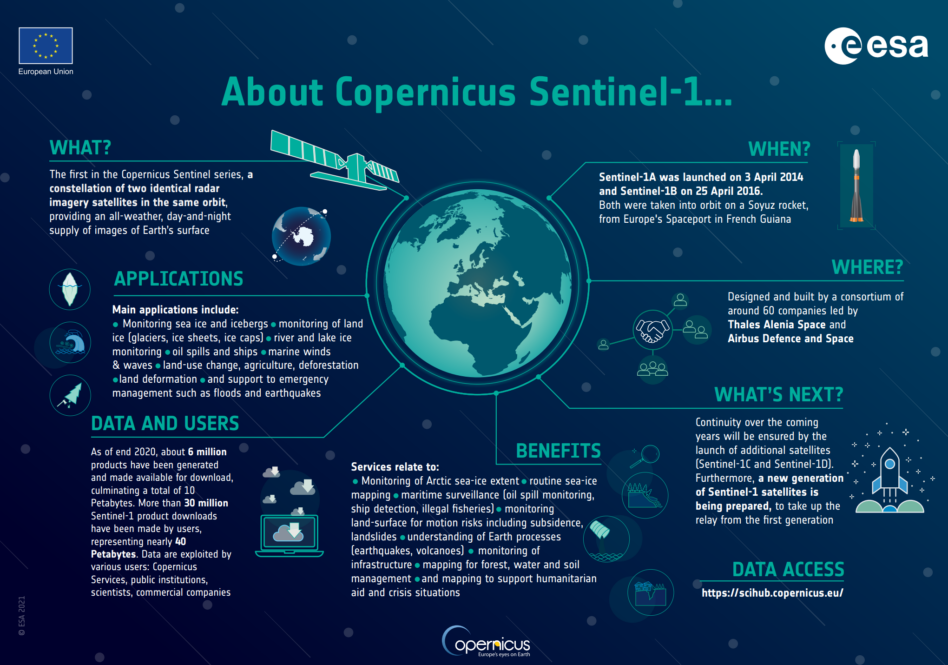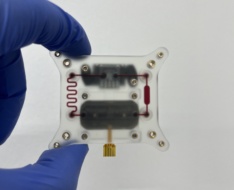A flagship European satellite has a power issue.
Sentinel-1B (S-1B), an Earth observation satellite, hasn’t been generating data since Dec. 23, when ESA noticed an issue with the Sentinel and switched off its powerful radar platform. According to an alert published Monday, ESA was unable to restore the power needed for radar operations in recent days.
Sentinel 101: ESA and Copernicus, the EU’s EO program, oversee the Sentinel constellation. S-1A and S-1B launched aboard Soyuz rockets from French Guiana in 2014 and 2016, respectively. Built by ~60 companies, the identical, polar-orbiting satellites are fitted with C-Band SAR payloads and provide all-weather, day-and-night data every six days. Thales Alenia Space Italy was the prime contractor for S-1A and S-1B.
As Tomorrow.io’s Aravind Ravichandran notes in a helpful Twitter thread, if S-1B goes offline for good, it’d push Sentinel’s repeat cycle from six to 12 days. That would carry quite the opportunity cost, as Sentinel’s open, free data is a key asset for disaster response, emergency management, land-surface monitoring, oil spill observation, and more.
Looking forward: ESA will continue to investigate the issue and attempt to fix the root cause. S-1C and S-1D are set for launches with Arianespace in 2022 and 2023, respectively.




